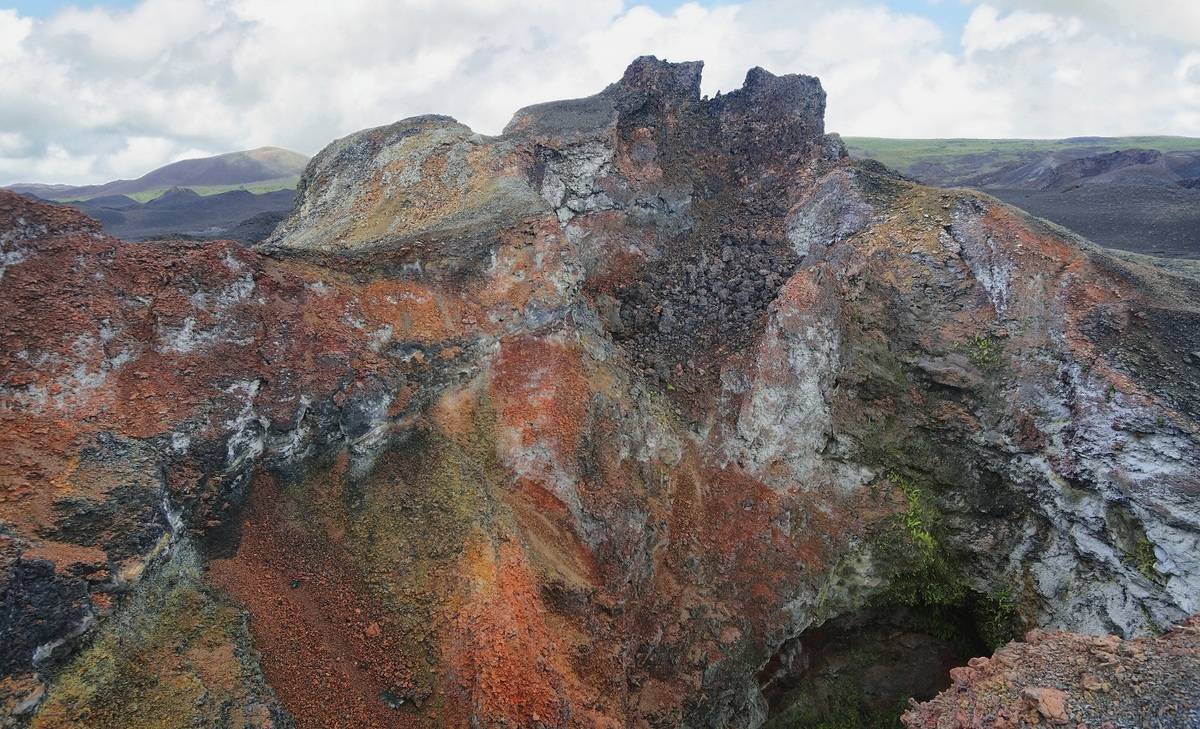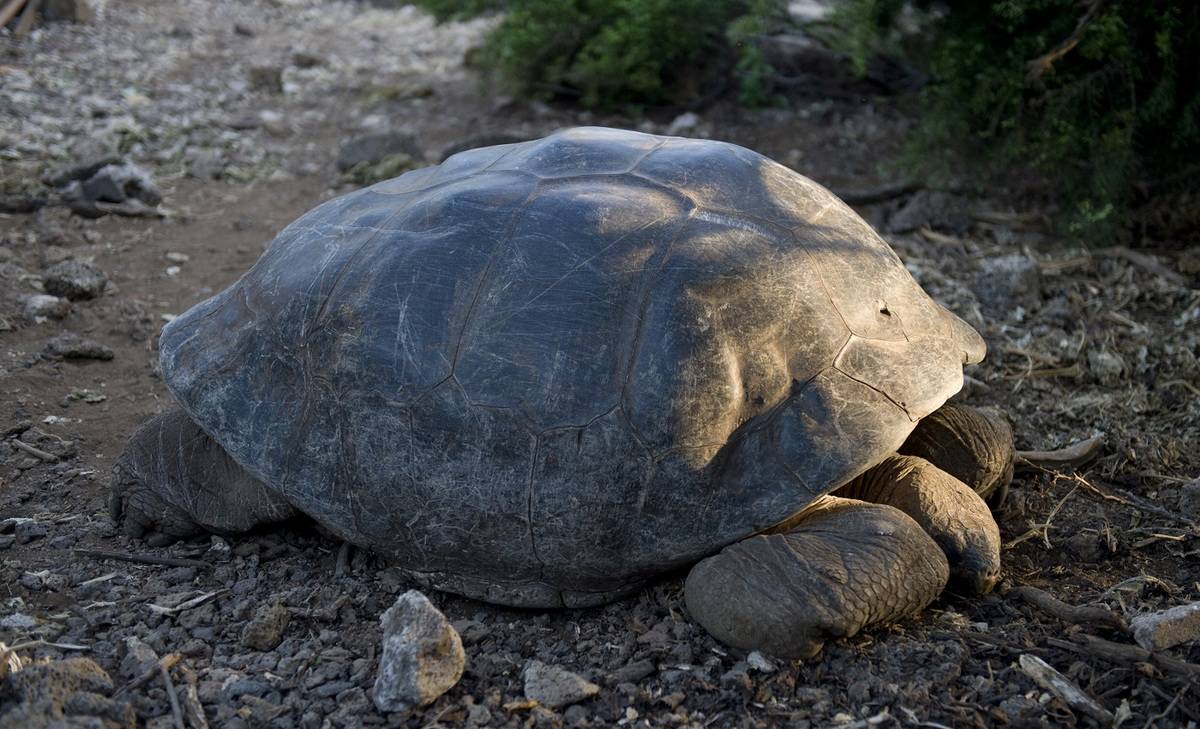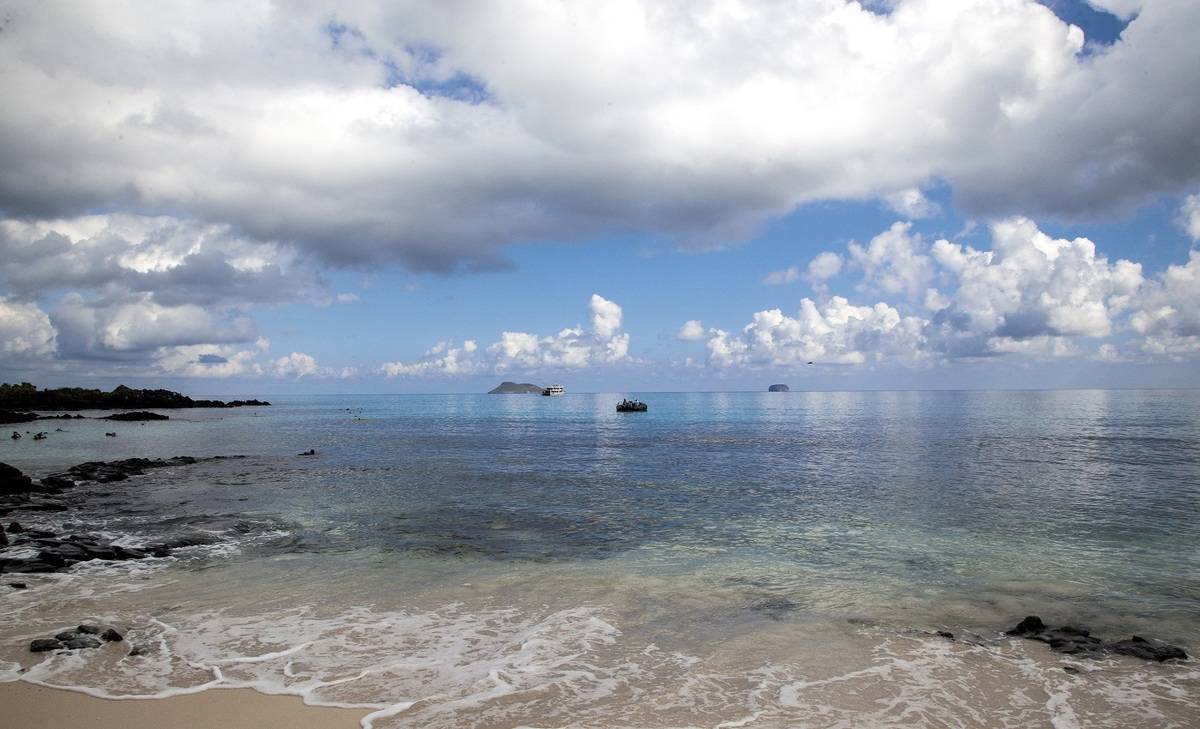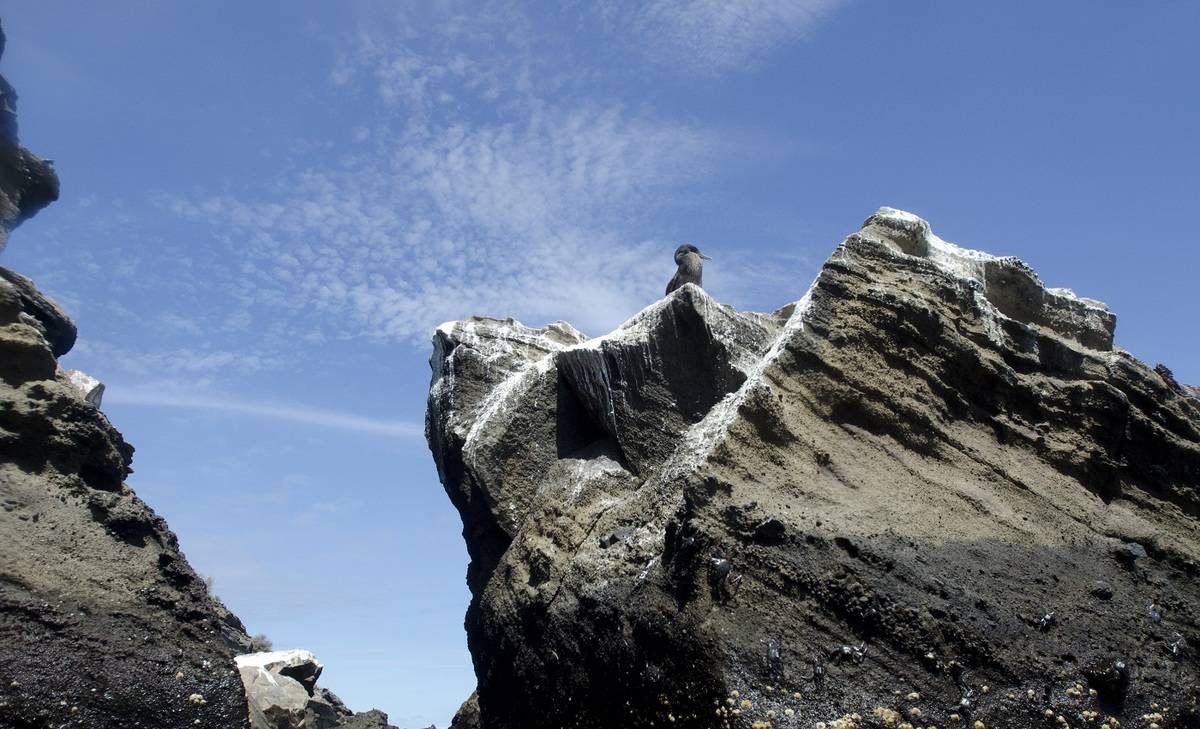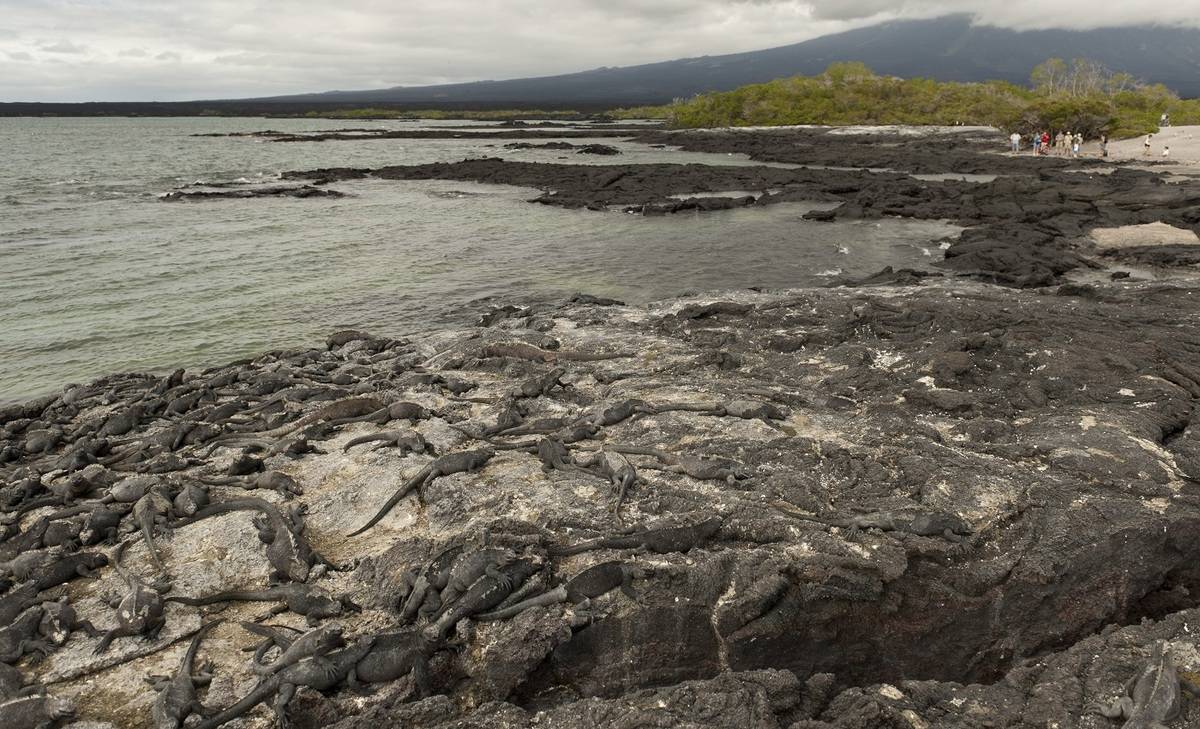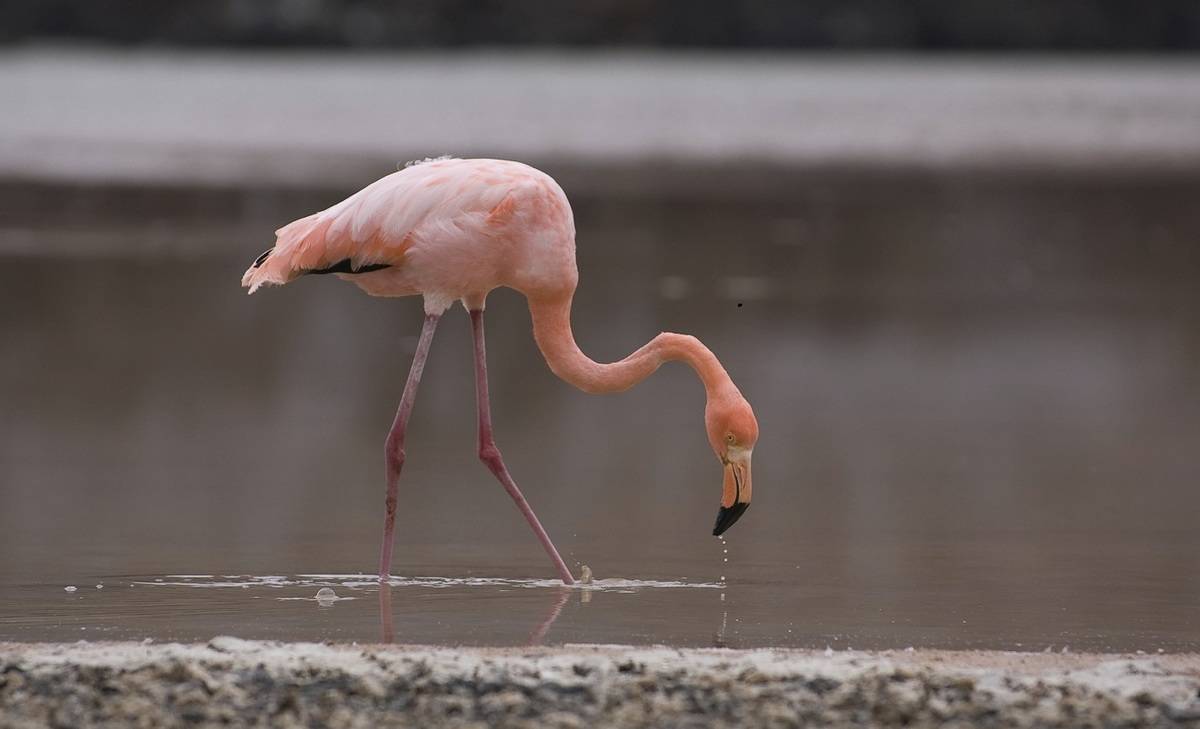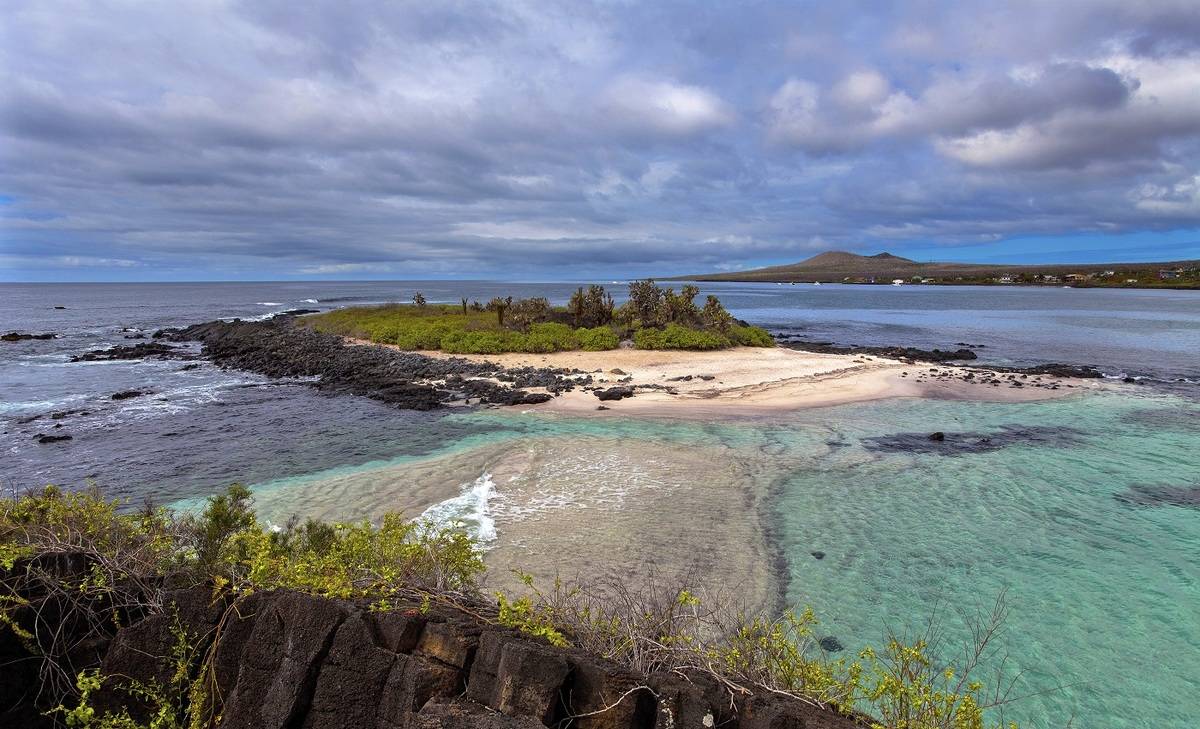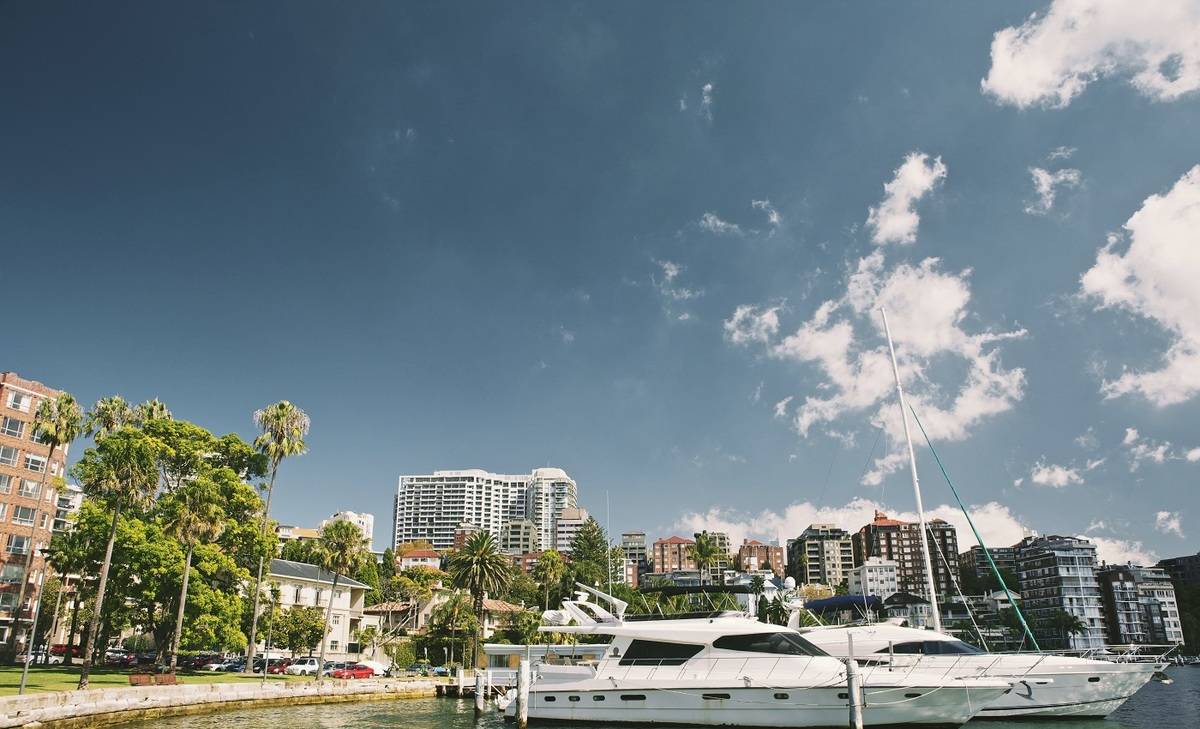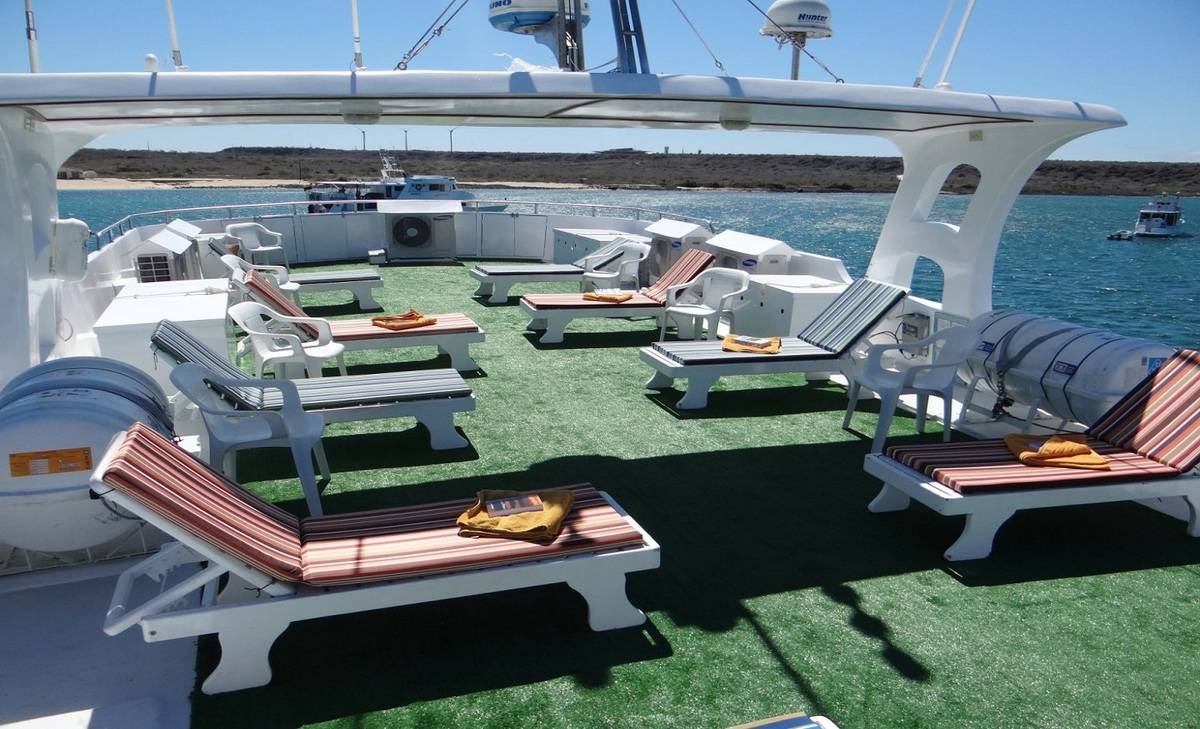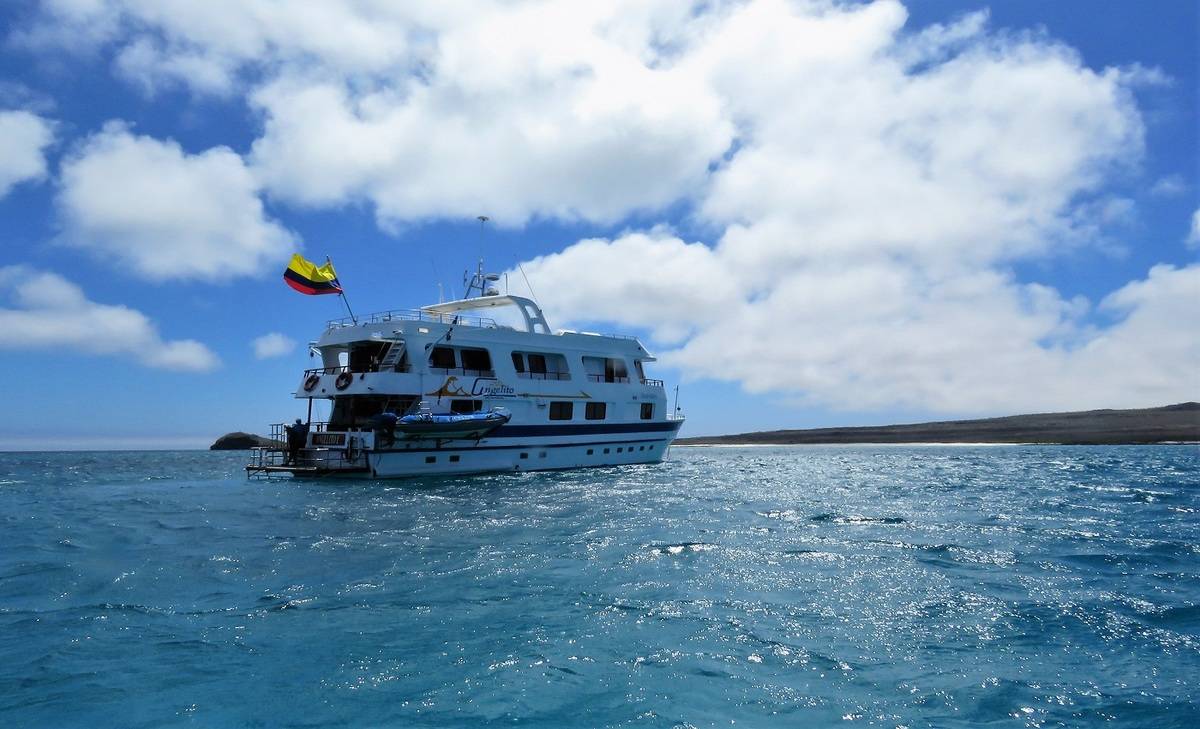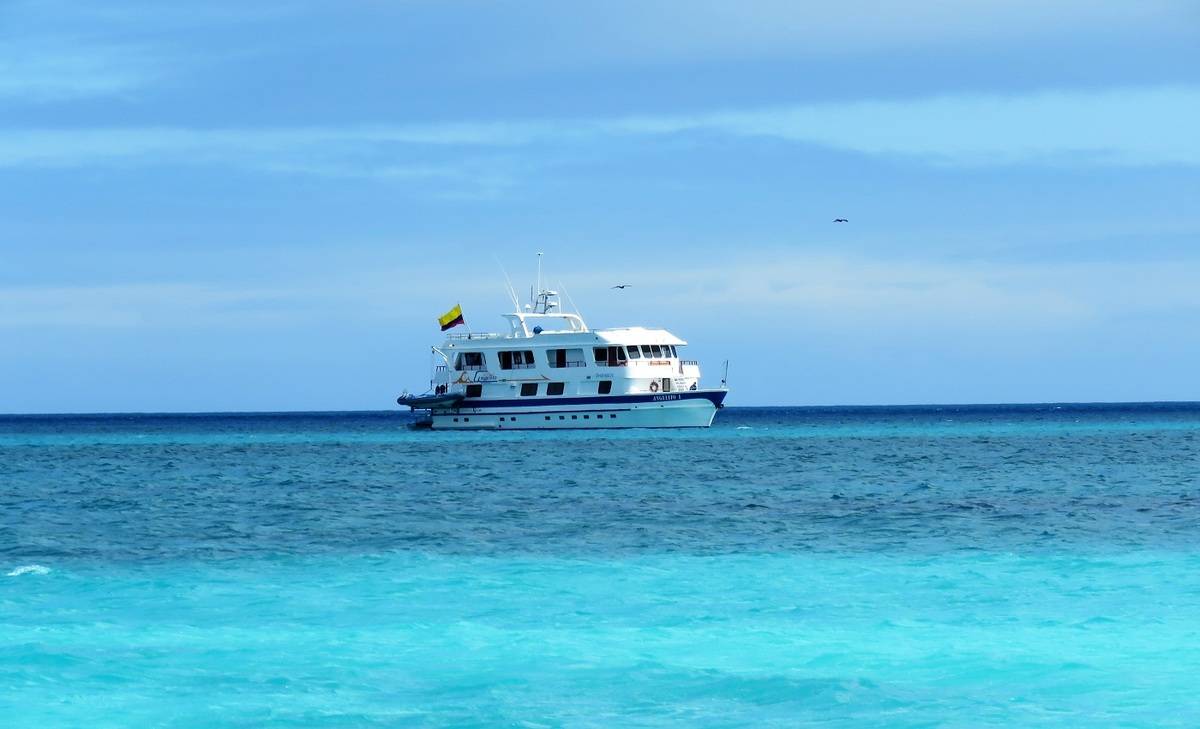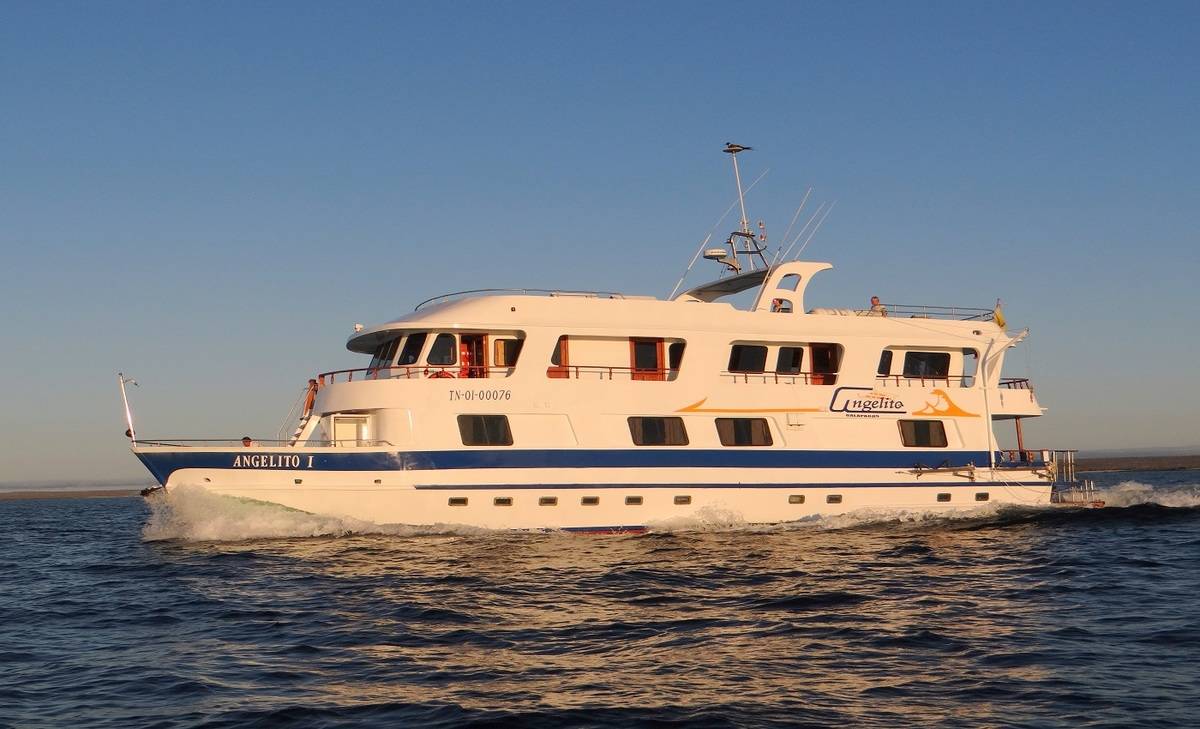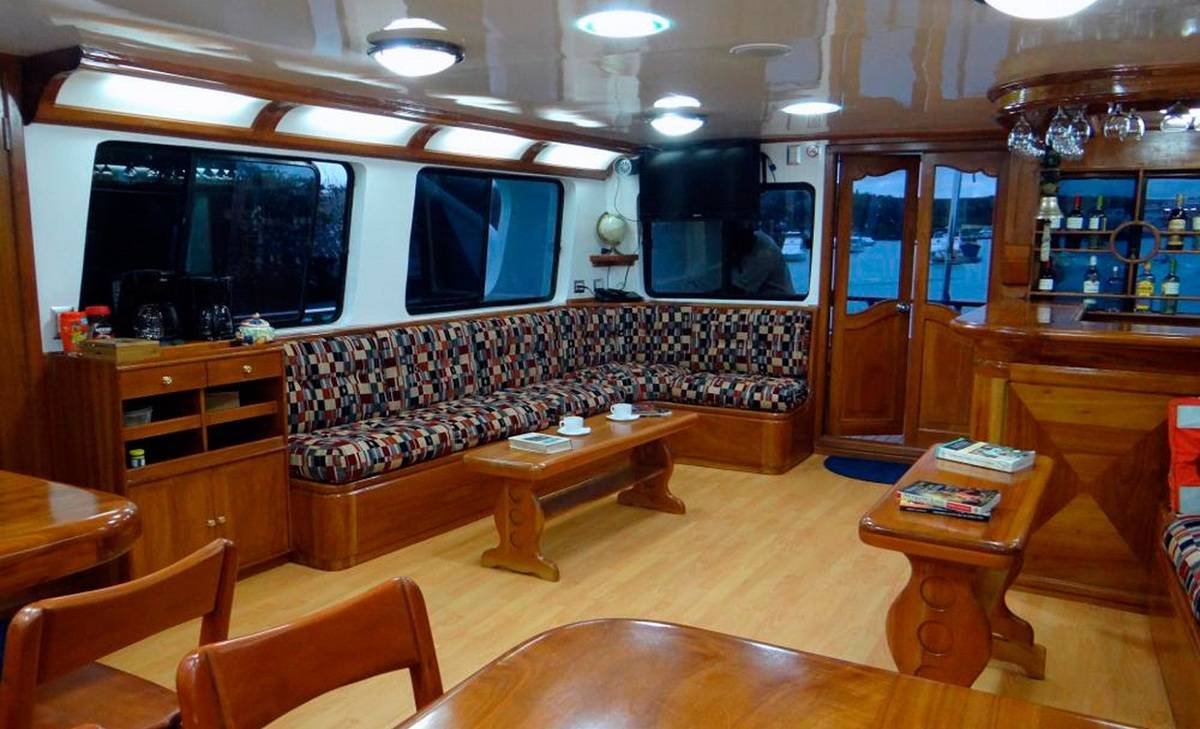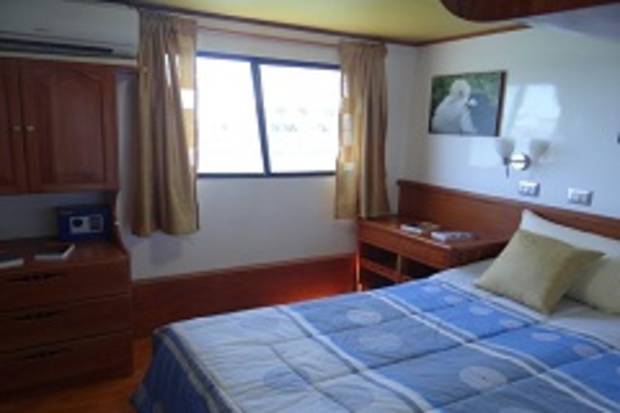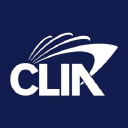Western & Central Galapagos Islands
8 Days - Angelito
The recently renovated Angelito provides its passengers with a very comfortable and cosy Galapagos cruise. The vessel takes a maximum of 16 passengers and on this 8 day cruise you will concentrate mainly on the western islands which are home to large numbers of marine iguanas, sea lions, Galapagos Penguins and an abundance of marine and bird life.

Home » Angelito: Western & Central Galapagos Islands
Itinerary Highlights
- Individual Air condition in all cabins, social areas and kitchen
- Quality naturalist guide
- Plenty of snorkelling opportunities (equipment included)
- Visit spectacular Pinnacle Rock
- Fantastic wildlife spotting including the chance to see Galapagos penguins
Itinerary in Brief
- Day 1: Baltra – Las Bachas
- Day 2: Mosquera – Cerro Dragon
- Day 3: Tagus Cove – Punta Espinoza
- Day 4: Urbina Bay – Elizabeth Bay
- Day 5: Punta Moreno – Navigation to Villamil with Whale Watching
- Day 6: Puerto Villamil: Sierra Negra: hike to the Crater – Giant Tortoise Breeding Centre
- Day 7: Punta Cormorant – Corona del Diablo – Post Office Bay – Puerto Ayora
- Day 8: Daphne – Baltra
(Itinerary B Route)
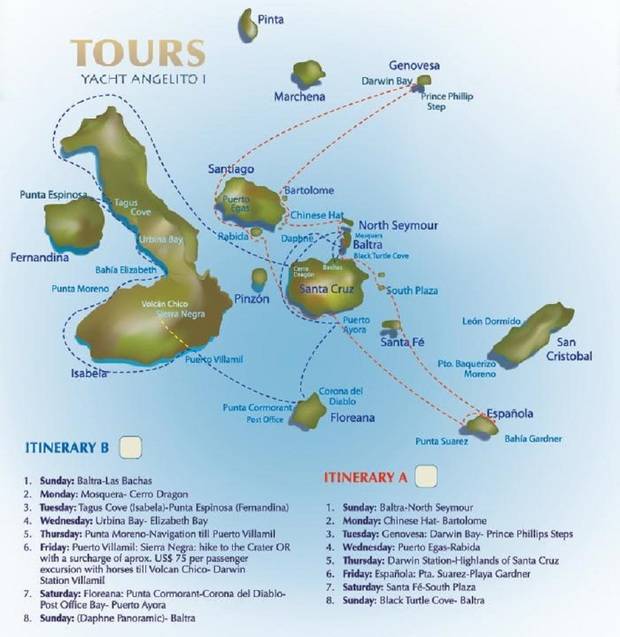
Day 1: Baltra – Las Bachas
Today you will take a flight from mainland Ecuador to the island Baltra in the Galapagos Islands.The flight from Guayaquil to Galapagos takes about 90 minutes. Arriving on the airport, the visitors have first to pay the entrance fee of US$ 100 for the National park. Leaving the arrival hall, the National Park Guide of the is waiting for you and accompanies the whole group to the harbor of Baltra, where your "Yacht Angelito I" is anchored. The cruise can begin!
White coral beach in the north of the Island Santa Cruz. Wet landing and easy walk along the beach. There are small brackish water lagoons behind the sand dune where occasionally it’s possible to observe flamingos and other coastal birds like black-necked stilts, whimbrels and white cheeked pintail ducks.
Important: don’t walk on top of the sand dunes because it is a favourite nesting site for sea turtles. After the walk you have the possibility to swim and snorkel from the beach.
Day 2: Mosquera – Cerro Dragon
It’s a small sandy island located between North Seymour and Baltra. The wet landing is sometimes a little bit difficult, depending of the tide.
Mosquera has one of the big sea lion colonies in Galapagos with different Harems and it is a wonderful visiting point to observe their behaviour. Often we have the possibility to see the endemic lava gulls and other coastal birds. On the lava rocks we find marine iguanas and sally lightfoot crabs and under the rocks sometimes scorpions.
The name Cerro Dragon means Dragon Hill and it is a very scenic visiting point. The hike passes first a flamingo lagoon behind the beach vegetation and then leads through an impressive forest of prickly pear cactus forest. A loop trail goes to a small hill where land iguanas live and nest. The view from this small hill over the surrounding landscape is spectacular.
Day 3: Tagus Cove (Isabela) – Punta Espinoza (Fernandina)
This protected cove was a favourite resting site for the early pirates and whalers who also carved and painted their names in the high cliffs of the cove.
It’s a dry landing and the scenic hike leads uphill through the Dry Zone vegetation to the Darwin Lake, a saltwater crater lake. At the end of the hike we go up to a parasitic spatter cone and have a wonderful view over the lava fields of Darwin Volcano. With the dinghy we go then along the cliffs to look out for Galapagos Penguins and flightless cormorants. If the water is clear, Tagus Cove is a very interesting snorkelling place with a great amount of marine invertebrates in the vertical walls.
The visit to Punta Espinoza is one of the highlights of a cruise in Galapagos. The dry landing is, depending of the tide on lava or on the landing platform in the mangrove forest. On the hike you will see a lot of huge marine iguanas in big groups. Take care to stay strict on the pathway because the sand dunes are nesting areas for the marine iguanas. On the lava coast, close to the shore line, there are the nesting places of the flightless cormorant. Lava lizards, the Galapagos hawk, marine turtles and the Galapagos penguins are often seen.
Day 4: Urbina Bay – Elizabeth Bay
Urbina Bay is an area uplifted out of the sea at the foot of Alcedo Volcano. The wet landing is on a steep beach, being sometimes a little bit difficult because of high waves. Along the shore there are sometimes flightless cormorants and huge marine iguanas. On the trail leading inland we look out for the colourful land iguanas. Sometimes it’s also possible to see a Galapagos tortoise along the pathway.
With the dinghy we drive into the protected mangrove cove. The entrance through a very narrow channel is not always easy depending on the tide. In the far away small corners we turn off the motor of the dinghy rowing then noiselessly to observe the marine turtles. In Elizabeth Bay we find within the tallest Red Mangrove Trees in Galapagos.
Day 5: Punta Moreno – Navigation to Villamil with Whale Watching
Very early in the morning we will go on a hike on a rough lava field on Punta Moreno. It is a place where we can see all 3 species of cacti: candelabra cactus, prickly pear cactus and lava cactus. This lava field is also home to a lot of pioneer plants. We will find some brackish water pools in the middle of the lava field with flamingos, common gallinules, white cheeked pintail ducks and paint-billed crakes. From the dinghy we will see flightless cormorants, Galapagos Penguins and huge marine iguanas.
At around 10:30 in the morning we start our long (about 6 hours) and beautiful navigation along the shore line around the Volcano Cerro Azul till Puerto Villamil. Depending of the season this navigation can be a little bit rough. We look out for dolphins and whales and stop to observe them if we see some. Just before the dark we arrive in the small harbour Puerto Villamil.
Day 6: Puerto Villamil: Sierra Negra: hike to the Crater – Darwin Station
Today we see a total different Galapagos. By bus we go uphill till close to the caldera of the volcano Sierra Negra (about 17 miles) and see the different vegetation zones of the volcano. Often it is a little bit raining or misty and foggy. On a hike of about 1 hour we go to the rim of the volcano to see the huge caldera measuring 6.2 miles (10 km) from North to South and 5.6 miles (9 km) from East to West. We can also see the huge new lava field from the last eruption in 2005.
In the afternoon we will go on an excursion to the lagoons of Villamil. We will start at the Tortoise Breeding Centre where we can see different subspecies of the Galapagos Land Tortoise and the work being carried out to restore the population of endangered populations. On the walk back to town we take a beautiful trail from lagoon to lagoon and look out for flamingos, common gallinues, white cheeked pintail ducks and black-necked stilts. We will also see a forest of button mangroves.
Day 7: Floreana: Punta Cormorant – Corona del Diablo – Post Office Bay – Puerto Ayora
The wet landing is on the “Green Beach” of Punta Cormorant. Depending on the light conditions the sand shines green because of the high percentage of olivine crystals in the sand. On the easy walk through the Arid Zone we come to a big salt-water lagoon with flamingos, white cheeked pintail ducks, black-necked stilts and depending of the season more migratory shore birds.
On a short walk we come to the “White Flour Sand Beach”, made of white corals. It’s a famous nesting beach for marine turtles and for this it is important not walking on the sand dune. Often we can see a lot of sting rays in the shallow water.
Before lunch we make a short visit of the famous barrel in Post Office Bay with a wet landing. We complete the unwritten law to visit this place to check, if there is a letter or postcard to the country you are from. The most special thing would be if you can take a postcard with you to hand delivering it to the destination. Like this the tradition is maintained and don’t get lost.
After this visit we have navigation to the Island Santa Cruz to Puerto Ayora where we arrive at about 17:00. The passengers have a little bit time to walk in town and it’s no specific guided visit. During this time the Angelito will have to get food and all necessary things for the continuation of the cruise. The dinner is on board.
Day 8: Daphne Panoramic – Baltra
Daphne is a tuff cone with little vegetation. This island is famous for the studies by Peter and Rosemary Grant about the Darwin Finches. The perfect literature to read about: The Beak of the Finch of Jonathan Weiner
We make only the panoramic navigation around the small tuff cone, but not too close to avoid introduction of insects.
After breakfast we have to leave the Angelito at about 08:00 to go to the airport Baltra for the return flight to the continent.
Cabin Details
Standard Cabin
Double bed or 2 single beds, private bathroom, window, ocean view, A/C, safe, hairdryer.
Angelito Deckplan
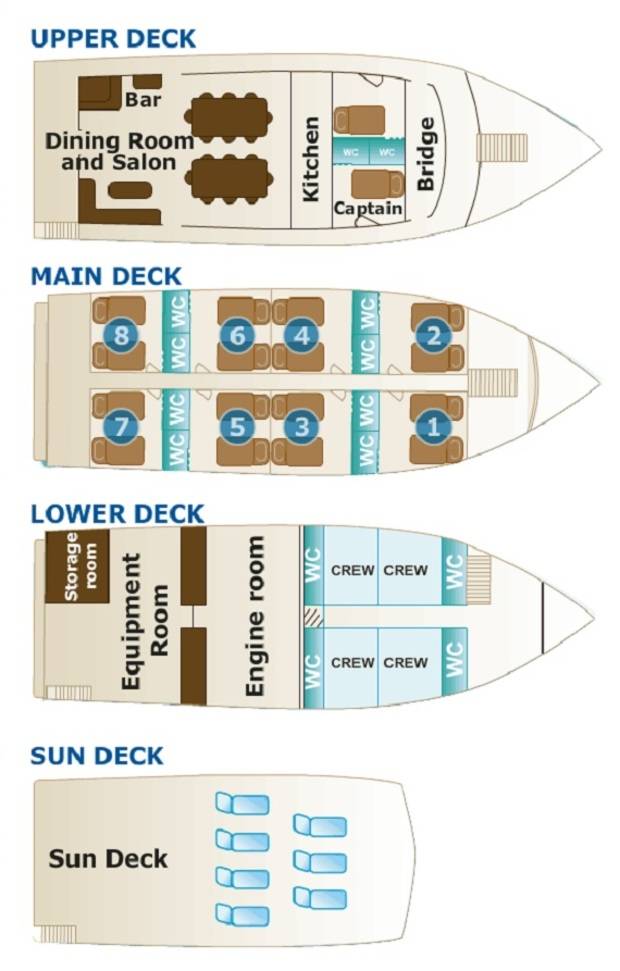
Specifications
- Construction - Puerto Ayora, Galapagos in 1992
- Refurbishment - Guayaquil, Ecuador in 2013
- Category - Tourist Superior
- Gross Tonnage - 152
- Capacity - 16 passengers in 8 double cabins
- Length - 22.3 meters (70 feet)
- Beam - 6.6 meters (22 feet)
- Speed - 12 knots
- Electricity - 110 Volts in the cabins and bathroom and 220 Volt sockets available in Dining area.
- Engines - 2 CUMMINS ( Marine Diesel), 405 HP each and 2100 RPM (new 2013)
- Generators - 2 CUMMINS_CPG (Diesel) with capacity of 65KW/60HZ each (new 2013)
- PureVent (= Fuel cleaner): PureVent is a radical new approach to cleaning the gas vented from engine crankcases by using centrifugal separation technology to remove oil mist and other particles, and help protect the environment.
- Navigation - 2 GPS, Magnetic Compass, radar with range of 36 miles, echo-sounders
- Desalinization machine with capacity for 65 gallons of fresh water per hour
- Individual Air condition in all cabins, social areas, kitchen, and bridge and engine room: Compressors with the newest technology certified for use in protected areas.
- HUNTER - Satellite GPS Monitoring, with digital maps and a real time monitoring program
- Control of all strategic points of the boat like engine rooms with TV cameras and monitor on the bridge
- Safety Classification - SOLAS 74 (safety of life at sea) ISM an ISPS - MARPOL
- Smoke Detectors in each cabin and each area of the Yacht
- Life Jackets - 2 life jackets SOLAS in each cabin and additional several in different strategic points of the Yacht ,
- Life Rafts - in total 2 - one for 16 persons and one for 12 persons
- Zodiacs - 2 with capacity for 10 passenger each for transportation from the boat to the shore
- Outboard motors for zodiacs: Yamaha ecological with 25 hp each and with protectors over the propellers
- Decks - 4 (Sun deck, Upper Deck, Main Deck, Lower Deck
- 8 Crew - captain, first mate (steersman), multilingual naturalist guide, machinist, 2 sailors, cook and auxiliary cook
Whats included?
- On-board accommodation
- All meals during your cruise
- Activities/shore excursions as specified
- Bilingual naturalist guides
- Snorkelling equipment
- Transfers
What’s not included?
- International and internal airfares
- Arrival/departure taxes or reciprocity fees, visa fees where applicable
- Travel insurance
- Fuel surcharges
- Galapagos national park fee US$100
- Transit control card US$20
- Wetsuit rental
- Gratuities
- Any items not mentioned as included

